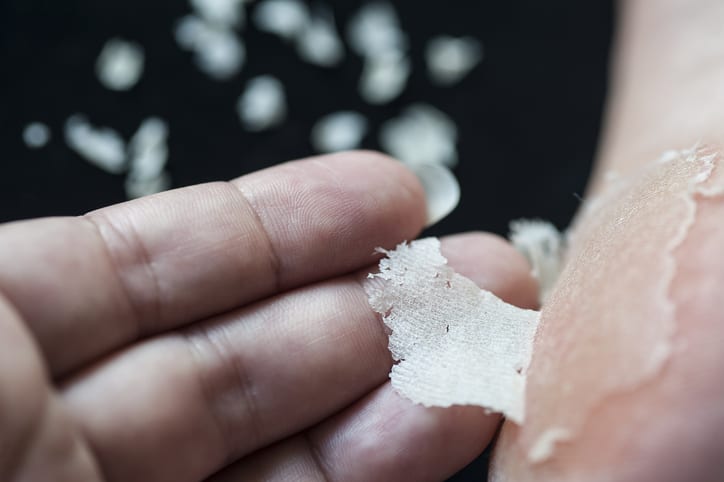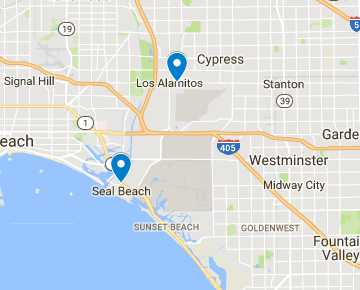Why Are My Feet Peeling?

If you’ve noticed that skin on your feet is starting to peel, you may be wondering what’s causing that and how you can remedy it.
Having peeling skin on your feet may be uncomfortable and make you feel self-conscious. Luckily, it’s usually nothing to worry about, as peeling feet don’t usually indicate a severe condition. Here are some of the most common culprits behind peeling feet and some effective treatment options.
Common Causes of Peeling
Dry Skin: Having dry skin may cause your feet to become scaly, itchy, rough, or so dry that they start peeling, cracking open, or bleeding. You may also notice white or dry patches, flushing, itching, and pain, especially if you’re dehydrated, stressed, spending too much time in the sun, or in the habit of smoking or taking hot showers. It’s important to treat dry feet, as you may develop an infection if your skin cracks. At-home treatment options include taking lukewarm showers and using a humidifier, moisturizer, non-irritating soap, or over-the-counter hydrocortisone cream.Eczema: If you have eczema, your body will overreact to harmless substances, which can cause inflammation, cracking, peeling, itchiness, infections, blisters, and discolored patches or rashes. Atopic dermatitis occurs when your immune system damages your skin’s moisture barrier, causing it to dry out and peel away, while dyshidrotic eczema can cause tiny, itchy blisters on your toes that may break open or start peeling. If you suffer from eczema flare-ups, consider taking antihistamine medications and apply moisturizers or topical medications.
Psoriasis: If you have this chronic autoimmune condition, your body will start attacking healthy tissue. This will increase the turnover rate of your skin cells, leading to thickened patches of skin or itchy, peeling skin — often on your knees, elbows, or the bottoms of your feet. Psoriasis is a lifelong condition, but there are a few things you can do to help your skin heal. Try applying topical corticosteroids, salicylic acid, or moisturizers. You can also speak to your doctor about undergoing phototherapy or taking immunosuppressants.
Athlete’s Foot: This highly contagious fungal infection causes white or yellow patches on the feet and toes or under the nails. Other symptoms of athlete’s foot include burning, blistering, dryness, scaliness, an itchy rash, and peeling skin. This fungus loves moist, warm places, so make sure to keep your feet dry, wear shoes when you’re at the pool, and change your shoes and socks regularly. If you have sweaty feet, wear well-ventilated shoes and use talcum powder.
Corns And Calluses: While calluses are generally not painful and found on the bottom of the foot, corns are most commonly found on the toes and can be painful because they cause dead skin to grow around inflamed skin. Corns and calluses don’t pose any danger, but they can cause cracking or peeling. It can be tempting to cut them off or remove them at home, but you should see a professional to avoid causing any injuries or infections.
Hyperhidrosis: Individuals with hyperhidrosis sweat excessively. While hyperhidrosis can affect any part of the body, it most commonly affects the feet, causing irritation, redness, and peeling. Treatment options for hyperhidrosis include applying prescription-strength aluminum chloride solutions, taking anticholinergic oral drugs, or using towelettes with glycopyrronium.
At-Home Remedies
Peeling can be frustrating and uncomfortable, but it’s usually easily treatable. Consider:Exfoliators And Foot Creams: If you have flaky, dry, or itchy feet, exfoliating and applying moisturizing foot cream can help. Soften your skin by soaking your feet in warm water before gently removing any dead skin with an exfoliating scrub. You can then apply a moisturizing foot cream to prevent dry and peeling skin.
The Baby Foot Peel: These gel-lined booties have been in use since the late ‘90s and contain lactic, glycolic, and citric acids. Just soak your feet and wear the booties for an hour to allow your skin to absorb the ingredients. In a week or two, your dead skin will begin to peel off in sheets, leaving you with smooth, soft feet.
Moisturizing Socks: Wearing moisturized socks is a simple overnight remedy for peeling feet. For maximum moisture, buy fuzzy socks with built-in lotion.
A Pumice Stone: Pumice stones are excellent tools for removing calluses and dry or dead skin. Use a piece of this lightweight, porous volcanic rock after you shower or bathe to slough off any dead skin. After exfoliating your feet, you can apply a moisturizer.
An Electronic Foot File: These high-tech, at-home solutions quickly remove dead or peeling skin and smooth cracked soles.
When To See A Doctor
While foot peeling is usually no cause for concern, if you develop foot wounds, intense pain, a fever, or any signs of infection or dehydration, you may want your doctor to take a look. You should also visit your doctor if your symptoms don’t improve with home treatment, you believe you have psoriasis, your feet are swollen or numb, you have large, oozing blisters, or you have diabetes.The Alamitos-Seal Beach Podiatry Group has offices in Seal Beach and Los Alamitos, and our medical professionals will be happy to discuss your peeling and treatment options. Schedule a consultation today!





